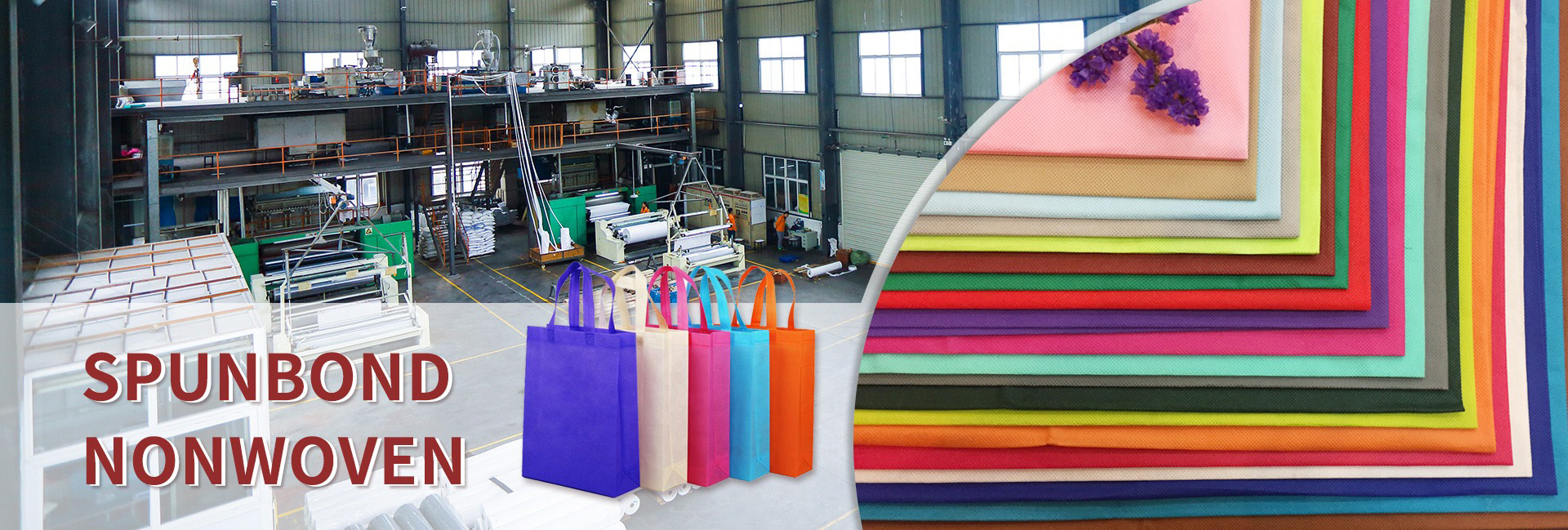Non woven fabrics are not woven fabrics, but are composed of oriented or random fiber arrangements, so they are also called non woven fabrics. Due to the different raw materials and production processes, non-woven fabrics can be divided into many types, such as polyester non-woven fabrics, polypropylene non-woven fabrics, etc.
Customers often ask about the differences between polyester non-woven fabric, polypropylene non-woven fabric, polypropylene fiber, and polyester when consulting non-woven fabric products. Below is a list of their differences.
PET non-woven fabric
PET spunbond filament non-woven fabric is a type of water repellent non-woven fabric, and its water repellent performance varies depending on the weight of the fabric. The larger and thicker the weight, the better the water repellent performance. If there are water droplets on the surface of non-woven fabric, the water droplets will directly slide off the surface.
Polyester non-woven fabric is resistant to high temperatures. Due to the melting point of polyester being around 260 ° C, it can maintain the stability of the external dimensions of non-woven fabrics in environments that require temperature resistance. It has been widely used in heat transfer printing, filtration of transmission oil, and some composite materials that require high temperature resistance.
PET spunbond non-woven fabric is a type of filament non-woven fabric second only to nylon spunbond non-woven fabric. Its excellent strength, good air permeability, tensile resistance, tear resistance and anti-aging properties have been used in various fields by more and more people.
PET spunbond non-woven fabric also has a very special physical property: resistance to gamma rays. That is to say, if applied to medical products, gamma rays can be directly used for disinfection without damaging their physical properties and dimensional stability, which is a physical property that polypropylene (PP) spunbond non-woven fabrics do not have.
Polypropylene non-woven fabric
Spunbonded non-woven fabric refers to the continuous filament formed by extrusion and stretching of polymers, which is laid into a web. The web is then self bonded, thermally bonded, chemically bonded or mechanically reinforced to turn the web into non-woven fabric.Used for disposable hygiene products, such as sanitary napkins, surgical gowns, hats, masks, bedding, diaper fabrics, etc. Women’s sanitary pads, disposable baby and adult diapers have become common products for daily consumption.
Non woven polypropylene vs polyester
PP is a polypropylene raw material, namely polypropylene fiber, which belongs to thin non-woven fabric; PET is a brand new polyester raw material, namely polyester fiber, with no additives in the entire production process. It is a very excellent environmentally friendly product and belongs to thick non-woven fabric.
The difference between polypropylene and polyester fibers
1、 Production principle
The production principles of polypropylene and polyester fibers are different. Polypropylene is prepared by heating propylene monomers to high temperature and adding them to a catalyst for polymerization, while polyester fibers are processed into fiber materials by adding cellulose etherification agents and solvents to polyester resin.
2、 Property characteristics
1. In terms of physical properties:
Polypropylene is relatively lightweight and has high fiber strength, but its wear resistance and high temperature resistance are poor. Polyester fibers have high tensile strength and durability, as well as heat and chemical resistance, resulting in a longer service life.
2. In terms of chemical properties:
Polypropylene has relatively stable chemical properties, is not easily corroded by acids, alkalis, etc., and does not contain toxic and harmful substances. Polyester fiber contains a benzene ring structure and has a certain degree of corrosion resistance.
3. In terms of environmental friendliness:
Polypropylene is a thermoplastic material that is not easily biodegradable and pollutes the environment. Polyester fibers can be degraded by microorganisms and will not cause pollution to the environment.
The difference between PP non-woven fabric and PET non-woven fabric
1. PP raw materials are cheap, while PET raw materials are expensive. PP waste can be recycled in the furnace, while PET waste cannot be recycled, so the cost of PP is slightly lower.
2. PP has a high temperature resistance of around 200 degrees, while PET has a temperature resistance of around 290 degrees. PET is more resistant to high temperatures than PP.
3. Non woven fabric printing, heat transfer effect, same width PP shrinks more, PET shrinks less, has better effect, PET saves more and wastes less.
4. Tensile force, tension, load-bearing capacity, and the same weight, PET has greater tensile force, tension, and load-bearing capacity than PP. 65 grams of PET is equivalent to 80 grams of PP in terms of tension, tension, and load-bearing capacity.
5. From an environmental perspective, PP is mixed with recycled PP waste, and all PET chips are brand new. PET is more environmentally friendly and hygienic than PP.
Post time: Mar-07-2024

